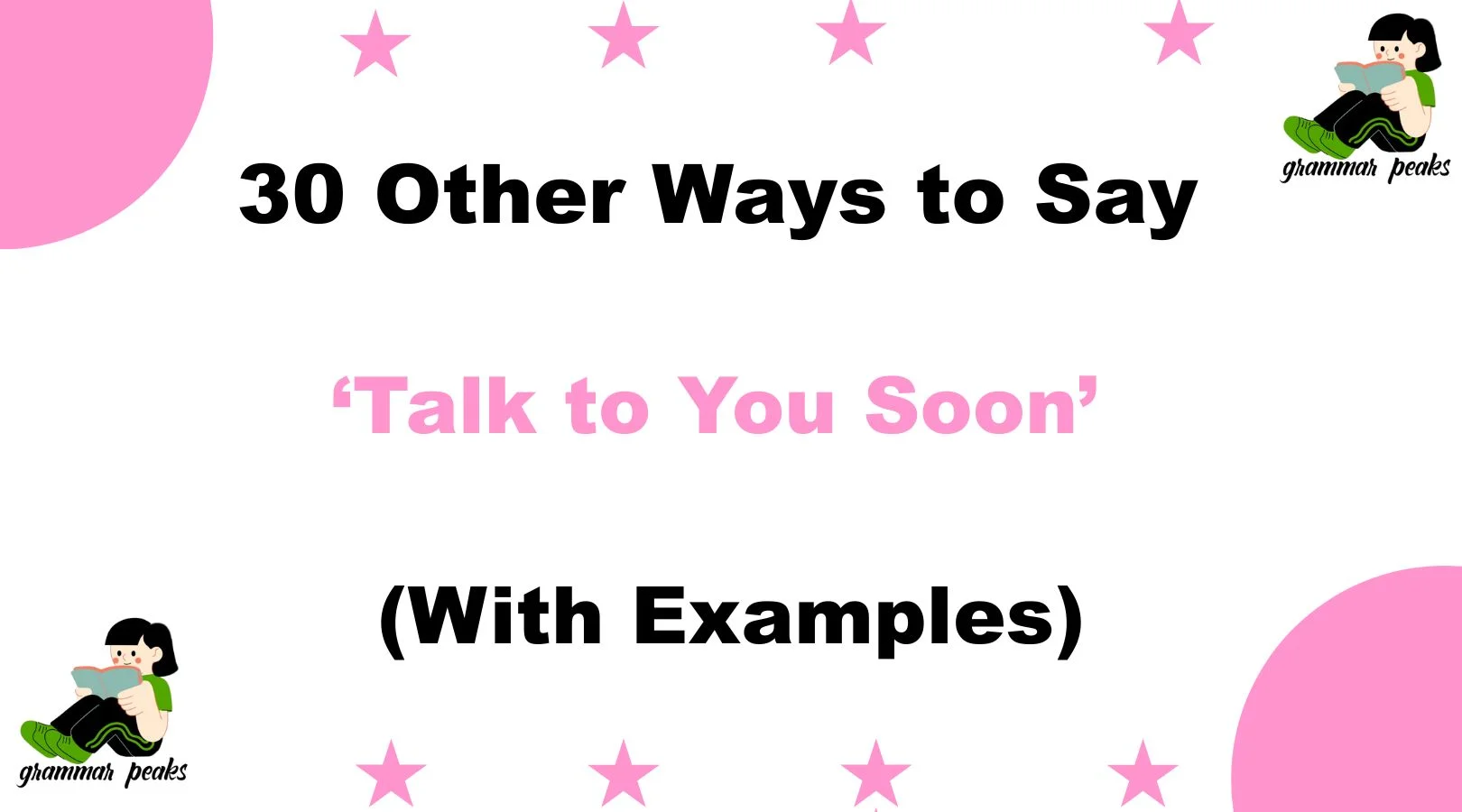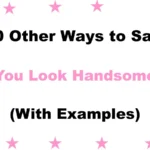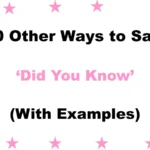Saying “Talk to You Soon” is a simple way to show someone you care and that the conversation isn’t over—it’s just paused. But sometimes, you want to say it in a way that feels warmer, more personal, or fits the tone of your message better. Whether you’re ending a text, a professional email, or a heartfelt conversation with a loved one, finding the right words can help make your farewell feel thoughtful, sincere, and memorable.
In this article, you’ll discover 30 unique alternatives to “Talk to You Soon,” complete with meanings, examples, tone, and usage tips—perfect for expressing yourself with clarity and care.
What Does “Talk to You Soon” Mean?
“Talk to You Soon” is a friendly and informal phrase used to end a conversation with the intention of continuing it in the near future. It expresses that the current communication is coming to a pause—not an end—and reflects a desire to stay connected. Whether spoken or written, this phrase offers warmth and reassurance, letting the other person know that they’re still on your mind and that more interaction is expected.
When to Use “Talk to You Soon”
Use “Talk to You Soon” when:
- You want to close a conversation warmly and naturally.
- You expect to reconnect relatively soon (later today, tomorrow, or within a few days).
- You’re speaking to someone you have an ongoing relationship with—personally or professionally.
Is It Professional/Polite to Say “Talk to You Soon”?
Yes, it’s considered polite and acceptable in most contexts. In casual and professional settings alike, it signals you’re open to continued communication. However, depending on the situation, you may want a more formal or relaxed version to match the tone of the interaction.
Pros and Cons of Saying “Talk to You Soon”
Pros:
- Keeps the door open for future contact
- Sounds friendly and conversational
- Works in both personal and professional situations
Cons:
- May seem too casual for highly formal settings
- Can be vague about when the next conversation will happen
- Repeated use might feel generic or lack emotional warmth
Synonyms for “Talk to You Soon”
- Catch You Later
- Speak Soon
- Chat Soon
- Looking Forward to Talking Again
- Until Next Time
- Catch Up Soon
- Let’s Talk Again Soon
- You’ll Hear from Me
- I’ll Reach Out Soon
- Stay in Touch
- Talk Later
- Let’s Stay Connected
- Drop Me a Line
- Hit Me Up Soon
- Touch Base Later
- Ping You Later
- Let’s Keep in Touch
- Holler If You Need Me
- Until We Talk Again
- We’ll Chat Soon
- Don’t Be a Stranger
- Message Me When You’re Free
- Keep Me Posted
- Hope to Catch Up Soon
- Let’s Not Be Strangers
- Let’s Check In Again Soon
- See You in My Inbox
- Can’t Wait to Talk Again
- Send Me a Note Soon
- Ring Me Up When You’re Free
1. Catch You Later
Definition: A laid-back way to say goodbye while implying you’ll reconnect.
Detailed Explanation: Often used in casual conversations among friends or coworkers, it suggests you’ll meet or talk again soon.
Scenario Example: You’re leaving a casual team meeting: “Alright, I’m off—catch you later!”
Best Use: Informal settings, texting friends or teammates.
Worst Use: In formal business emails or official meetings.
Tone: Casual, friendly, relaxed.
2. Speak Soon
Definition: A friendly and slightly more formal version of “Talk to You Soon.”
Detailed Explanation: It signals that the conversation will continue shortly, often used in emails or calls.
Scenario Example: Ending a check-in call with a colleague: “Thanks for the update—speak soon!”
Best Use: Business or semi-formal communication.
Worst Use: When you don’t actually intend to follow up.
Tone: Polite, professional, warm.
3. Chat Soon
Definition: A light, modern phrase suggesting a casual continuation of conversation.
Detailed Explanation: Works well in text or digital communication to express ongoing contact.
Scenario Example: Wrapping up a messaging convo: “It was nice catching up—chat soon!”
Best Use: Friendly or remote work settings.
Worst Use: Very formal situations.
Tone: Informal, digital, warm.
4. Looking Forward to Talking Again
Definition: A thoughtful way to say you’re eager for the next conversation.
Detailed Explanation: It adds a sense of anticipation and warmth.
Scenario Example: After a job interview: “Thank you again—I’m looking forward to talking again.”
Best Use: Emails, interviews, networking events.
Worst Use: Brief or purely casual conversations.
Tone: Sincere, optimistic, professional.
5. Until Next Time
Definition: A poetic, heartfelt way to signal future communication.
Detailed Explanation: Suitable when parting on a meaningful note, especially after deep conversations.
Scenario Example: After a long phone call with a close friend: “Take care—until next time.”
Best Use: Thoughtful goodbyes or personal messages.
Worst Use: Business emails needing prompt follow-ups.
Tone: Warm, thoughtful, reflective.
6. Catch Up Soon
Definition: A casual phrase that implies reconnecting to share updates.
Detailed Explanation: Suggests a more interactive, two-way conversation in the near future.
Scenario Example: After chatting briefly with an old friend: “Let’s catch up soon—miss our talks!”
Best Use: Reconnecting with friends or family.
Worst Use: Highly professional or formal settings.
Tone: Friendly, warm, nostalgic.
7. Let’s Talk Again Soon
Definition: A clear and polite way of suggesting continued conversation.
Detailed Explanation: Works well to leave the door open for a follow-up.
Scenario Example: Concluding a project call: “Great work today—let’s talk again soon.”
Best Use: Professional or collaborative settings.
Worst Use: Cold emails or automated replies.
Tone: Polite, proactive, professional.
8. You’ll Hear from Me
Definition: A confident and reassuring phrase meaning you’ll initiate the next communication.
Detailed Explanation: Promises a future message or follow-up from your side.
Scenario Example: At the end of an interview: “Thanks for your time—you’ll hear from me shortly.”
Best Use: When you plan to reach out again soon.
Worst Use: If you’re unsure about following up.
Tone: Assuring, professional, dependable.
9. I’ll Reach Out Soon
Definition: Similar to “You’ll hear from me,” but softer and more personal.
Detailed Explanation: Often used in follow-ups and client communication.
Scenario Example: “Thanks for the great conversation—I’ll reach out soon with next steps.”
Best Use: Emails, networking, or customer service.
Worst Use: Casual or humorous chats.
Tone: Professional, warm, courteous.
10. Stay in Touch
Definition: A universal phrase that encourages ongoing connection.
Detailed Explanation: More open-ended than “talk soon,” this suggests a long-term connection.
Scenario Example: “It was lovely chatting—let’s stay in touch!”
Best Use: Farewells, job transitions, or old friends.
Worst Use: Urgent matters or tight timelines.
Tone: Positive, supportive, general.
11. Talk Later
Definition: A short and casual way of saying you’ll reconnect.
Detailed Explanation: Less formal, often used in text messages or spoken chats.
Scenario Example: “Gotta run—talk later!”
Best Use: Friends or casual colleagues.
Worst Use: Business writing or first-time contacts.
Tone: Informal, quick, light.
12. Let’s Stay Connected
Definition: An inclusive and relationship-focused way to suggest more conversations.
Detailed Explanation: Expresses value in maintaining ongoing communication.
Scenario Example: “This collaboration was great—let’s stay connected.”
Best Use: Networking, partnerships, friendly emails.
Worst Use: Conversations with no future intention.
Tone: Friendly, collaborative, optimistic.
13. Drop Me a Line
Definition: An informal invitation for someone to contact you.
Detailed Explanation: Encourages others to reach out when they can.
Scenario Example: “Whenever you’re free, just drop me a line.”
Best Use: Friendly, personal messages.
Worst Use: Formal or corporate communication.
Tone: Inviting, relaxed, personal.
14. Hit Me Up Soon
Definition: A very casual way of saying “contact me later.”
Detailed Explanation: Best used in close or informal relationships.
Scenario Example: “Missed our chats—hit me up soon!”
Best Use: Friends, texting, informal digital talk.
Worst Use: Workplace emails or unfamiliar contacts.
Tone: Casual, fun, urban.
15. Touch Base Later
Definition: A semi-formal way to say you’ll reconnect soon.
Detailed Explanation: Commonly used in professional settings to plan follow-ups.
Scenario Example: “Let’s touch base later this week to finalize details.”
Best Use: Work emails, project planning.
Worst Use: Emotional or deeply personal conversations.
Tone: Neutral, businesslike, organized.
16. Ping You Later
Definition: A modern phrase often used in tech or startup circles.
Detailed Explanation: “Ping” implies a short, casual message or check-in.
Scenario Example: “Busy right now—I’ll ping you later.”
Best Use: Digital environments, remote teams.
Worst Use: Traditional or formal business contexts.
Tone: Light, digital, modern.
17. Let’s Keep in Touch
Definition: An encouraging phrase for maintaining communication over time.
Detailed Explanation: Focuses on continuity in the relationship.
Scenario Example: “It was great meeting you—let’s keep in touch.”
Best Use: Post-networking events, moving away, or life transitions.
Worst Use: When you don’t actually intend to follow up.
Tone: Warm, hopeful, professional or personal.
18. Holler If You Need Me
Definition: A playful, friendly way to offer continued support.
Detailed Explanation: Invites the other person to reach out whenever they need.
Scenario Example: “I’m just a message away—holler if you need me.”
Best Use: Friends, informal chats, support messages.
Worst Use: Formal, corporate communication.
Tone: Friendly, humorous, supportive.
19. Until We Talk Again
Definition: A poetic and heartfelt phrase to close a conversation.
Detailed Explanation: Implies a deeper connection and future contact.
Scenario Example: “This meant a lot—until we talk again.”
Best Use: Emotional goodbyes, meaningful conversations.
Worst Use: Routine texts or business chats.
Tone: Thoughtful, sincere, expressive.
20. We’ll Chat Soon
Definition: Similar to “talk to you soon,” but more relaxed.
Detailed Explanation: Keeps it light and familiar.
Scenario Example: “Alright, that’s all from me—we’ll chat soon.”
Best Use: Friends, casual work convos, texting.
Worst Use: Formal reports or announcements.
Tone: Easygoing, social, lighthearted.
21. Don’t Be a Stranger
Definition: A light-hearted reminder to stay in touch.
Detailed Explanation: Encourages the other person to reach out again soon instead of disappearing for too long.
Scenario Example: “Always great chatting—don’t be a stranger!”
Best Use: Friends, old colleagues, casual reconnects.
Worst Use: Strictly formal or hierarchical communication.
Tone: Friendly, playful, informal.
22. Message Me When You’re Free
Definition: An invitation for the other person to initiate the next conversation.
Detailed Explanation: Offers flexibility and shows you’re open to reconnecting at their convenience.
Scenario Example: “I know you’re busy—message me when you’re free.”
Best Use: Respectful of the other person’s time; great for friends or busy coworkers.
Worst Use: If you’re the one expected to follow up.
Tone: Considerate, casual, flexible.
23. Keep Me Posted
Definition: A polite request to stay updated and continue the conversation.
Detailed Explanation: Often used when expecting news or developments from someone.
Scenario Example: “Let me know how it goes—keep me posted.”
Best Use: Project updates, plans, follow-ups.
Worst Use: End-of-conversation closings that require emotional connection.
Tone: Professional or neutral, depending on context.
24. Hope to Catch Up Soon
Definition: Expresses a wish to reconnect and share updates.
Detailed Explanation: A warm, slightly sentimental phrase ideal for rekindling connection.
Scenario Example: “It’s been too long—hope to catch up soon!”
Best Use: Distant friends, family, old colleagues.
Worst Use: Ongoing conversations where “catch up” doesn’t apply.
Tone: Friendly, nostalgic, warm.
25. Let’s Not Be Strangers
Definition: A clever twist on “Don’t be a stranger,” suggesting mutual effort to stay in contact.
Detailed Explanation: Communicates a desire to maintain the relationship.
Scenario Example: “Loved this convo—let’s not be strangers.”
Best Use: Friendly chats, reconnecting conversations.
Worst Use: Highly formal or brief interactions.
Tone: Inviting, humorous, informal.
26. Let’s Check In Again Soon
Definition: A warm way to suggest another conversation in the near future.
Detailed Explanation: Shows interest in keeping the conversation going.
Scenario Example: “Great talk—let’s check in again soon.”
Best Use: Weekly syncs, casual work calls, team chats.
Worst Use: Final conversations or emotional farewells.
Tone: Open, supportive, soft.
27. See You in My Inbox
Definition: A witty and digital-forward way to encourage a reply.
Detailed Explanation: Refers to ongoing email or chat-based communication.
Scenario Example: “Looking forward to your ideas—see you in my inbox!”
Best Use: Tech-savvy teams, email-based communication.
Worst Use: Face-to-face or emotional chats.
Tone: Modern, playful, tech-friendly.
28. Can’t Wait to Talk Again
Definition: Expresses enthusiasm and eagerness for the next chat.
Detailed Explanation: Adds emotion and excitement to the goodbye.
Scenario Example: “Such a good talk—can’t wait to talk again.”
Best Use: Close friends, partners, supportive conversations.
Worst Use: Formal or distant interactions.
Tone: Warm, enthusiastic, affectionate.
29. Send Me a Note Soon
Definition: A gentle request to stay in touch via message or email.
Detailed Explanation: Feels handwritten and personal, even if it’s digital.
Scenario Example: “If you have updates—send me a note soon.”
Best Use: Letters, thoughtful emails, personal follow-ups.
Worst Use: Instant messaging or fast-paced environments.
Tone: Gentle, sincere, calm.
30. Ring Me Up When You’re Free
Definition: A friendly way to invite a phone call when convenient.
Detailed Explanation: Encourages the person to take initiative when they’re ready.
Scenario Example: “No rush—ring me up when you’re free.”
Best Use: Family, friends, casual work relationships.
Worst Use: Written business communication or emails.
Tone: Friendly, flexible, approachable.
Conclusion
When you’re parting ways—whether for five minutes or five months—the words you choose can leave a lasting impression. Instead of defaulting to the standard “Talk to You Soon,” these 30 thoughtful alternatives offer a range of tones, from playful and warm to polished and professional.
Each one lets you tailor your message to the relationship, context, and feeling you want to leave behind. Choosing the right phrase adds intentionality and emotional clarity, whether you’re sending a text to a friend or signing off a meeting with a client.
FAQs
1. Is it okay to say “Talk to You Soon” in a professional email?
Yes, “Talk to You Soon” is generally acceptable in professional emails, especially if you already have an established relationship with the recipient. However, for more formal settings or first-time contacts, alternatives like “Speak soon” or “Let’s connect again shortly” may feel more polished and appropriate.
2. What’s a more formal way to say “Talk to You Soon”?
If you’re looking for a more formal tone, consider phrases like:
- “I look forward to continuing our discussion.”
- “Let’s reconnect shortly.”
- “I’ll follow up with you soon.”
These sound professional while still conveying the same future intent.
3. What’s the best alternative for texting or messaging friends?
For casual conversations, you can use:
- “Catch you later”
- “Chat soon”
- “Hit me up”
These phrases sound natural, friendly, and fit well in texting culture.
4. Can I use “Talk to You Soon” in a goodbye message?
Absolutely. Saying “Talk to You Soon” at the end of a call, text, or even a heartfelt goodbye helps convey that the relationship or conversation isn’t ending—just pausing. For extra warmth, you could say “Can’t wait to talk again” or “Until next time.”
5. What’s a playful or creative alternative to “Talk to You Soon”?
If you want to add personality or humor, try:
- “See you in my inbox”
- “Don’t be a stranger”
- “Ring me up when you’re free”
These bring a light, engaging tone and help make your message stand out with charm.

Mia Rose is a passionate Language Coach and Contributor at GrammarPeaks, where she specializes in practical grammar tips and language learning strategies. With a strong foundation in education and communication, Mia brings a friendly, approachable style to her writing. Her goal is to make complex grammar rules simple and usable for learners at any level, helping them grow in both confidence and fluency.





